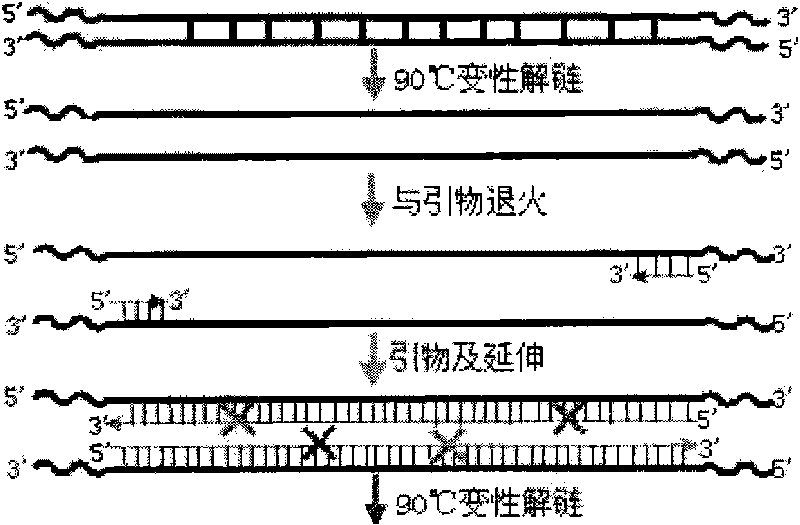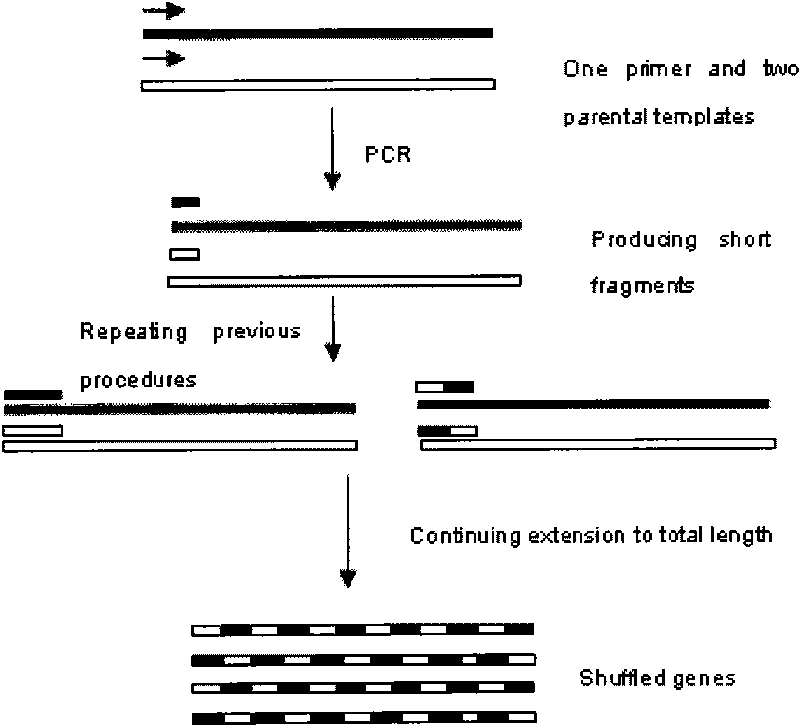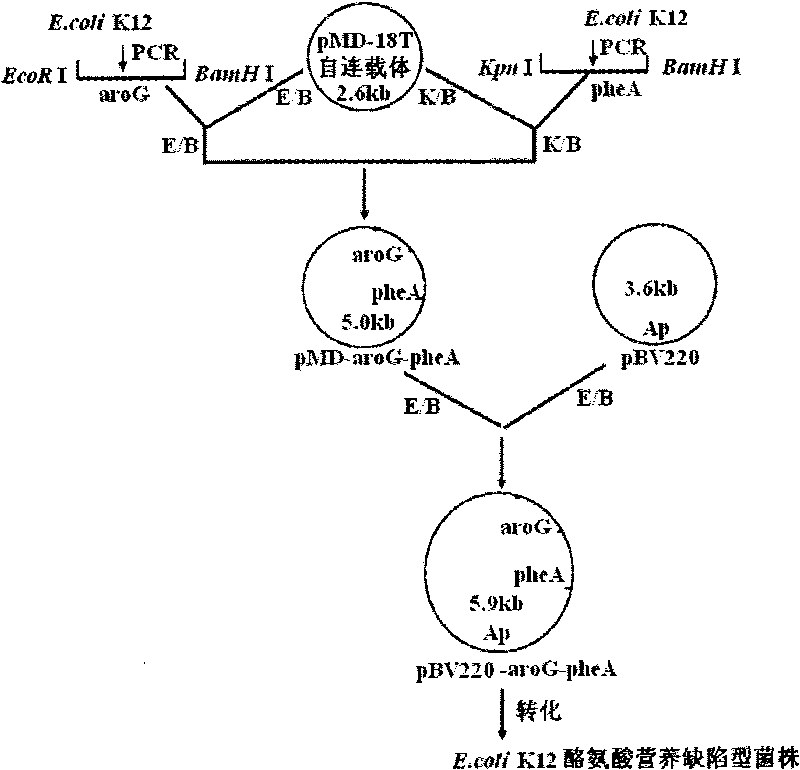In-vitro directed coevolution method for modifying L-phenylalanine gene engineering strains
A technology of genetically engineered bacteria and genetically engineered strains, applied in the field of in vitro directional co-evolutionary transformation of L-phenylalanine genetically engineered bacteria, can solve problems such as phenotype changes
- Summary
- Abstract
- Description
- Claims
- Application Information
AI Technical Summary
Problems solved by technology
Method used
Image
Examples
Embodiment Construction
[0039] The present invention provides a method for transforming L-phenylalanine genetically engineered bacteria in vitro through directional cooperative co-evolution, which mainly includes the following steps:
[0040] Step 1: the construction of L-phenylalanine genetically engineered bacteria, specifically including the following construction steps:
[0041] 1. Construction of tyrosine auxotrophic strain
[0042] The wild-type E.coil K12 was treated with UV and NTG compound mutagenesis, the wild-type strain was eliminated with antibiotics, and the auxotrophic strain was enriched; the auxotrophic strain was obtained by spot planting control method, and finally the auxotrophic strain was identified. Screening to obtain tyrosine auxotrophic host bacteria.
[0043] 2. Extraction of E.coil K12 genomic DNA by alkaline lysis
[0044] 3. Acquisition of key enzyme aroG and pheA genes
[0045] Genomic DNA was used as a template, and the designed upstream and downstream primers of ar...
PUM
 Login to View More
Login to View More Abstract
Description
Claims
Application Information
 Login to View More
Login to View More - R&D
- Intellectual Property
- Life Sciences
- Materials
- Tech Scout
- Unparalleled Data Quality
- Higher Quality Content
- 60% Fewer Hallucinations
Browse by: Latest US Patents, China's latest patents, Technical Efficacy Thesaurus, Application Domain, Technology Topic, Popular Technical Reports.
© 2025 PatSnap. All rights reserved.Legal|Privacy policy|Modern Slavery Act Transparency Statement|Sitemap|About US| Contact US: help@patsnap.com



